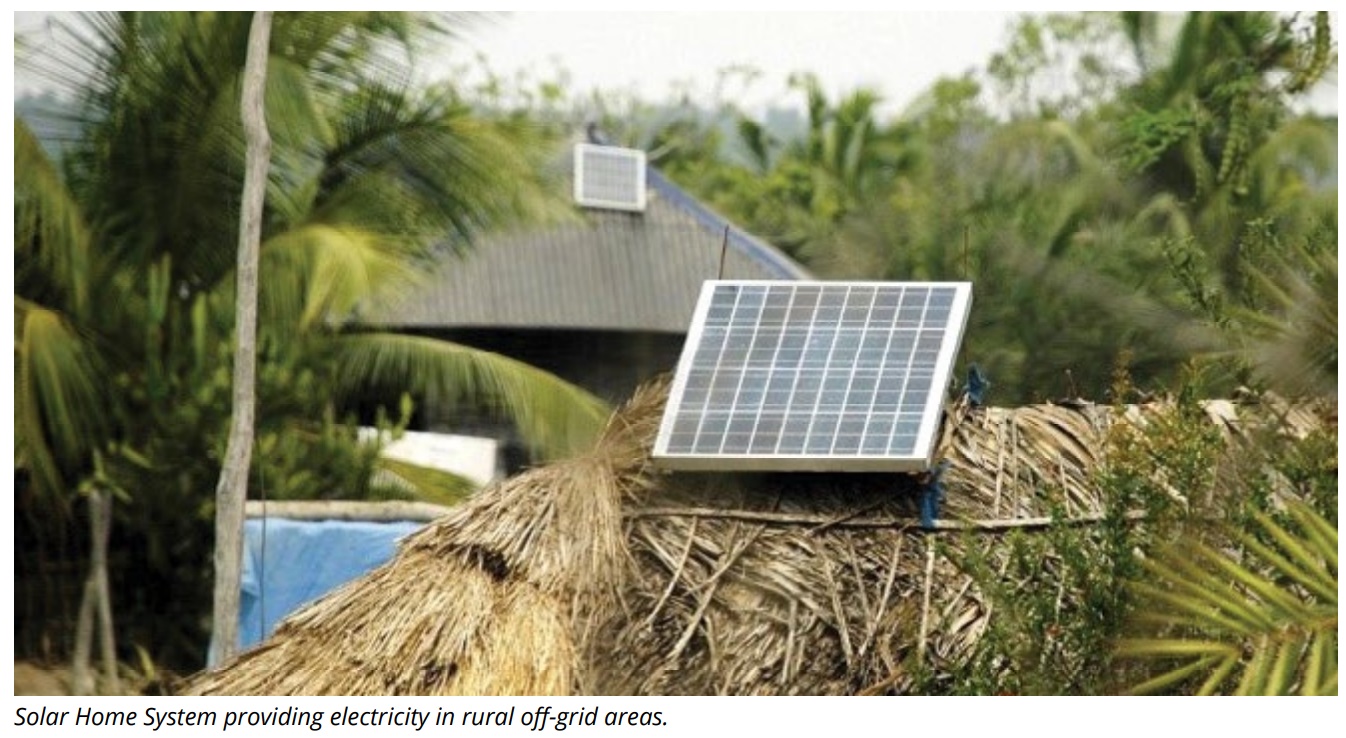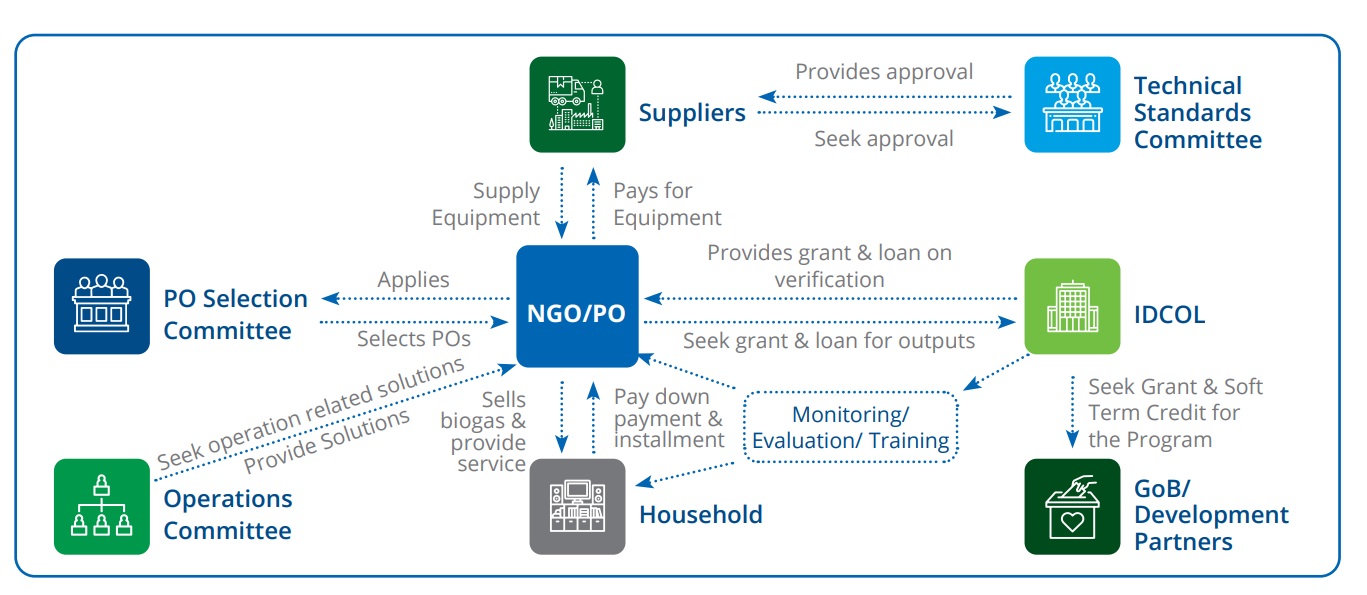

IDCOL started SHS program in January 2003 to fulfill basic electricity requirement of the off-grid rural people of Bangladesh. IDCOL SHS program has been acclaimed as the largest off-grid electrification program in the world. Till date, about 4.13 million SHSs have been installed under the program in the remote areas which enabled people to obtain electricity far sooner than would have been possible through grid electricity. Thus, the program has ensured supply of solar electricity to 18 million people i.e. 12% of the country’s total population who previously used kerosene lamps for lighting purposes.

IDCOL has developed a unique model for the dissemination of SHS. The model has been proved effective and accepted by the beneficiaries under the program. It introduced ownership model through micro-finance/cash sale rather than fee-for-service model. The figure in the following page shows the basic structure of the SHS program. IDCOL initially received credit and grant support from the World Bank and GEF to start the program. Later, GIZ, kfW, SDG Relevance to Solar Home System Program PROGRAM STRUCTURE 126 Go to Contents ADB, IDB, GPOBA, JICA, USAID and DFID came forward with additional financial support for expansion of the SHS Program. IDCOL, through its 56 Participating Organizations (POs) which are non-government organizations, micro-finance institutions, societies, foundations, and/or private entities, implemented the program. IDCOL provided subsidy and concessionary credit to the POs. IDCOL also provided promotional support and necessary trainings to ensure quality of the program. Till December 2020, IDCOL disbursed USD 504.5 million (BDT 4172.7 crore) as credit and channeled USD 96.62 million (BDT 704.2 crore) as grant to all the POs under the program.

Social Impact: Bangladesh Institute of Development Studies (BIDS) conducted impact assessment of IDCOL SHS Program which has identified some interesting impacts of the program on rural community. These are discussed below
According to BIDS, easy access to electricity ensures that students in SHS households in the off-grid rural areas benefit from longer study hours – which substantially increase the number of completed school years in comparison to their counterparts in non-SHS households. This is expected to offer them better job opportunities in the future and raise their living standard in general.
BIDS study also revealed that SHS households enjoy higher safety, comfort and convenience compared to non-SHS households. For instance, SHS user household members have higher sense of security at nighttime by replacing kerosene lamps with SHS light. In addition, the SHS households have access to various electronic appliances i.e. TV, radio, fan, mobile charger.
SHS household member also suffer less from several types of preventable illness such as general ailment, respiratory diseases, and GI illness. Moreover, adoption of SHS was found to have an adverse effect on recent fertility which consequently has a positive effect on population control of our country.
Women are one of main target beneficiaries of the SHS program. SHS has a positive influence on women’s mobility, general and economic decision-making. Women are found to use more time for tutoring children, watching TV, socializing, visiting friends and neighbors with the adoption of SHS.